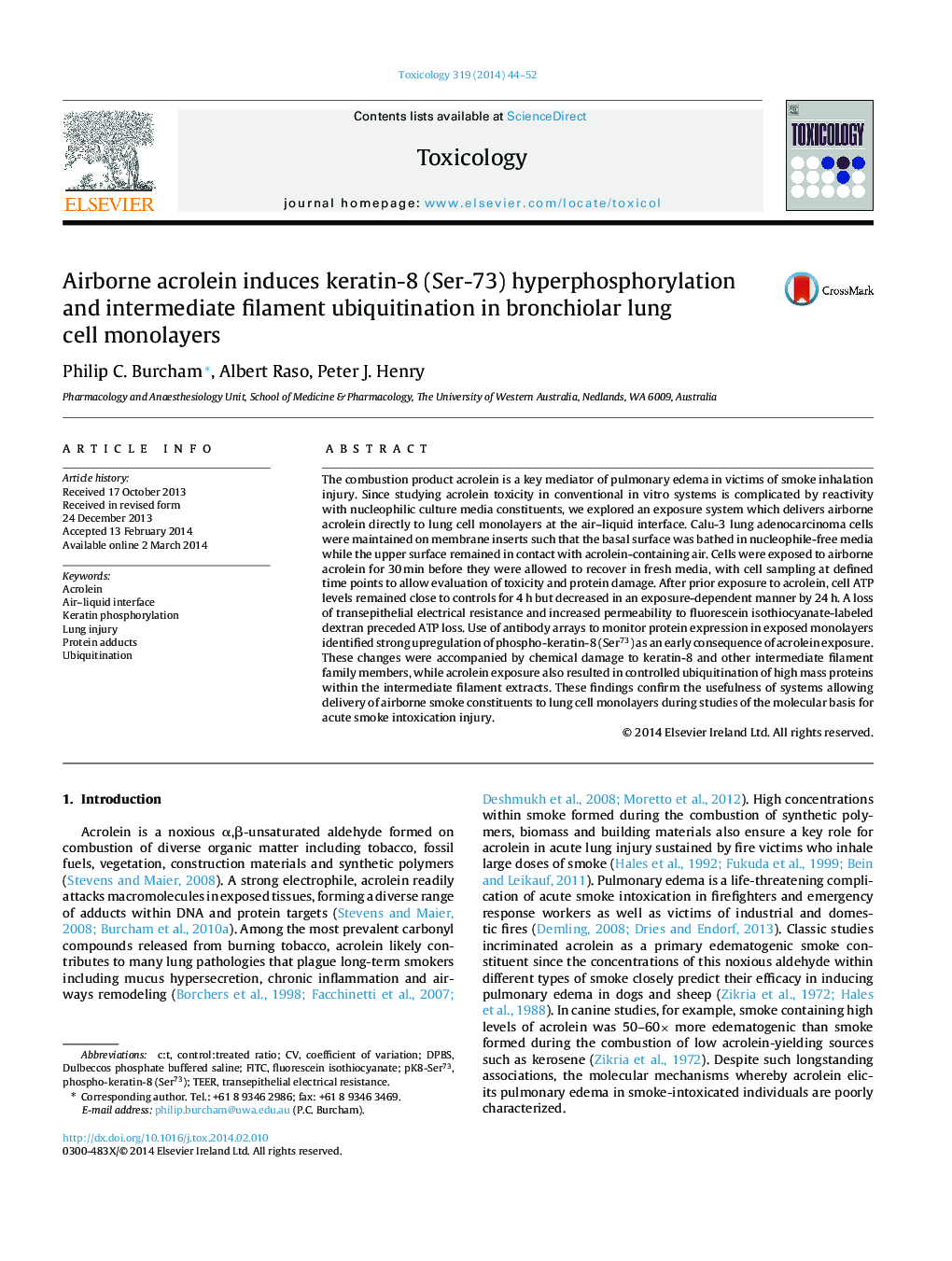| Article ID | Journal | Published Year | Pages | File Type |
|---|---|---|---|---|
| 5859268 | Toxicology | 2014 | 9 Pages |
Abstract
The combustion product acrolein is a key mediator of pulmonary edema in victims of smoke inhalation injury. Since studying acrolein toxicity in conventional in vitro systems is complicated by reactivity with nucleophilic culture media constituents, we explored an exposure system which delivers airborne acrolein directly to lung cell monolayers at the air-liquid interface. Calu-3 lung adenocarcinoma cells were maintained on membrane inserts such that the basal surface was bathed in nucleophile-free media while the upper surface remained in contact with acrolein-containing air. Cells were exposed to airborne acrolein for 30Â min before they were allowed to recover in fresh media, with cell sampling at defined time points to allow evaluation of toxicity and protein damage. After prior exposure to acrolein, cell ATP levels remained close to controls for 4Â h but decreased in an exposure-dependent manner by 24Â h. A loss of transepithelial electrical resistance and increased permeability to fluorescein isothiocyanate-labeled dextran preceded ATP loss. Use of antibody arrays to monitor protein expression in exposed monolayers identified strong upregulation of phospho-keratin-8 (Ser73) as an early consequence of acrolein exposure. These changes were accompanied by chemical damage to keratin-8 and other intermediate filament family members, while acrolein exposure also resulted in controlled ubiquitination of high mass proteins within the intermediate filament extracts. These findings confirm the usefulness of systems allowing delivery of airborne smoke constituents to lung cell monolayers during studies of the molecular basis for acute smoke intoxication injury.
Keywords
Related Topics
Life Sciences
Environmental Science
Health, Toxicology and Mutagenesis
Authors
Philip C. Burcham, Albert Raso, Peter J. Henry,
